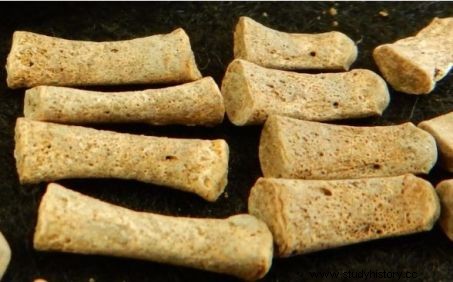Three complete syphilis genomes have been reconstructed from historical samples dating back to colonial Mexico.

Digital reconstruction of the syphilis bacterium Treponema pallidum.
The French called it the "evil of Naples"... The Italians, the "French evil". Genital wounds and the eruption of pustules all over the body, gnawed bones, disfigured faces… The lightning epidemic of syphilis suddenly appeared in Italy after 1494, had been described in the wake of a war undertaken by the King of France, Charles VIII ( 1470-1498). Undoubtedly disseminated by the soldiers, the pathogenic agent had spread at an astonishing speed throughout Europe, then the rest of the world...
Two major theories then clashed as to the true origin of what was called pox, this dreaded infectious sexually transmitted disease. The Colombian thesis, which locates the origin of this pathology in the New World, from where it would have been brought back to Europe after its discovery in 1492, by the crew of Christopher Columbus; from another position, which would have it already been present for centuries in the Old World.
Posted in PLOS , neglected tropical diseases , the reconstruction, for the first time, of three complete syphilis genomes from historical samples taken from five individuals by researchers from the Max Planck Institute in Jena and the University of Tübingen (Germany), INAH ( Mexico) and the University of Zurich (Switzerland) should soon be able to settle the question.
Caused by a bacterium, Treponema pallidum , the identification of the disease on ancient skeletons was done by studying the characteristic lesions that this disease left on the bones. But the difficulty is that another treponematosis, yaws, this time a non-venereal condition, transmitted by simple skin-to-skin contact, bequeathed the same types of bone scars.
Close-up of the finger bones of one of the individuals with syphilis, found in Mexico. The skeleton shows the characteristic signs of treponematosis. © Rodrigo Barquera. Collection of Santa Isabel, Lab. of osteology, ENAH, Mexico
No way then to discern from an osteological point of view, a case of syphilis, from another affected by yaws. Also, DNA samples taken from bones damaged by the infection, from children of the XVII th century buried in the Franciscan convent of Santa Isabel in Mexico, made it possible for the first time to isolate the genomes of syphilis and to discern the subspecies of the bacterium (TPA for T . pallidum ssp. pallidum ) responsible for the disease in two cases, as well as the subspecies of the bacteria (TPE for T . pallidum ssp. pertained ) causing yaws, in a third.
Person with syphilis in 1883. ©Mary Evans /Sipa
Why is this important? The results obtained from these American cases could help researchers identify once and for all the much-debated origin of syphilis - New World vs Old World- and shed light on the evolutionary history of this pathology that was previously thought out of reach. Syphilis is a re-emerging disease with millions of new infections each year.


